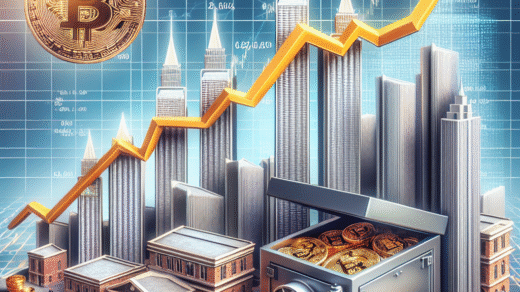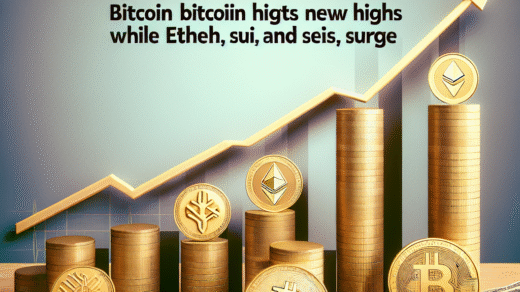As we venture into 2025, the investment landscape is witnessing a remarkable shift. While Bitcoin (BTC) has long been heralded as the digital gold, recent trends suggest that traditional precious metals, including gold, silver, platinum, and palladium, are stealing the spotlight. This article delves into the performance of these precious metals compared to Bitcoin, examining their gains, the driving factors behind their rise, and what this means for investors.
The Performance of Precious Metals in 2025
Gold (XAU) has experienced an outstanding year, boasting a price surge of 44%, reaching a record high of $3,784 per troy ounce. This performance is noteworthy, but it doesn’t stop there. Silver has outperformed Bitcoin with an impressive gain of 53%, now priced at $44.32 per troy ounce. Platinum and palladium have also shown significant gains, with platinum rising 60% to $1,452 and palladium climbing 33% to $1,207. In contrast, Bitcoin has managed only a modest increase of just over 20%, now valued at $113,000.
Why Precious Metals Are Outperforming Bitcoin
The year-to-date performance indicates a clear trend: precious metals are being favored as safe havens amidst economic uncertainty. With advanced economies facing a deteriorating fiscal outlook, coupled with rising inflation and geopolitical tensions, investors are increasingly turning to gold and its precious counterparts. This shift highlights the traditional role of precious metals as inflation hedges.
The Impact of Central Bank Policies
One of the significant factors contributing to the rise in precious metals prices is the diversification strategies adopted by global central banks. As reported by a European Central Bank study, these institutions collectively hold around 36,000 metric tons of gold. Central banks have ramped up their gold purchases since the onset of the COVID-19 pandemic, further accelerating their buying activities post-Russia’s invasion of Ukraine in 2022. Over the last three years, central banks have added more than 1,000 metric tons annually, a pace that doubles the average of the previous decade. This unprecedented demand has provided a robust tailwind for gold and its precious metal counterparts.
Bitcoin’s Position as a Reserve Asset
Despite its growing popularity, Bitcoin has yet to secure a position on central banks’ balance sheets. This limitation curtails its role as a reserve asset, especially when compared to precious metals. Bitcoin’s volatile nature, particularly recent trends of liquidations and distributions by long-term holders, has capped its gains. Reports indicate that these sell-offs have offset any inflows from Exchange-Traded Funds (ETFs), further complicating Bitcoin’s path to solidifying its status as a digital store of value.
Investing in Precious Metals vs. Bitcoin
For investors weighing their options, it’s essential to consider the current market dynamics. Precious metals, especially gold, are historically viewed as reliable safe havens during economic downturns. In contrast, Bitcoin, while touted as a revolutionary digital currency, continues to face challenges that may hinder its ability to outperform traditional assets in times of crisis.
For those interested in diversifying their portfolios, understanding how to buy Bitcoin and other cryptocurrencies is crucial. You can visit this guide on buying Bitcoin or explore how to purchase various cryptocurrencies. Similarly, if you’re looking to invest in Ethereum, this resource provides comprehensive insights.
The Future of Bitcoin and Precious Metals
As we progress through 2025, the interplay between Bitcoin and precious metals will likely continue to evolve. The economic backdrop, influenced by inflationary pressures and central bank policies, will play a vital role in shaping investor sentiment and market dynamics.
While Bitcoin enthusiasts remain optimistic about the cryptocurrency’s long-term potential, the current data suggests that precious metals are reasserting their dominance in the realm of safe-haven assets. Investors should remain vigilant, analyzing market trends and adjusting their strategies accordingly.
Conclusion
In conclusion, as we navigate the complexities of today’s financial landscape, the performance of precious metals compared to Bitcoin underscores a significant shift in investment priorities. With gold, silver, platinum, and palladium leading the charge, traditional assets are reclaiming their status as the go-to options for risk-averse investors. Keeping an eye on these developments will be crucial for anyone looking to make informed investment decisions in the coming years.
For further insights into cryptocurrency investments, including XRP and Bitcoin ETFs, check out our articles on XRP and Bitcoin ETFs.
Meta Description: “Explore how precious metals like gold, silver, platinum, and palladium are outperforming Bitcoin in 2025. Discover investment insights and the reasons behind this shift in asset preference as traditional safe havens regain their appeal amid economic uncertainty.”







